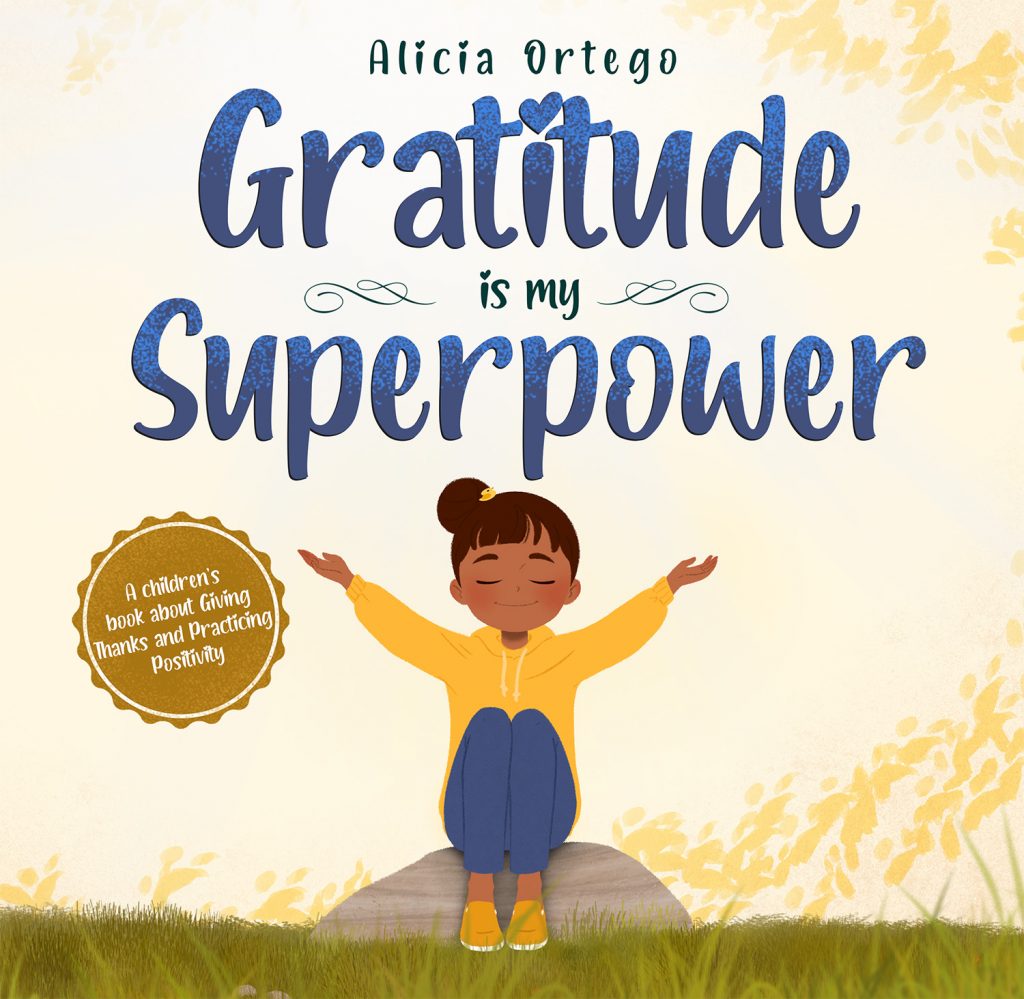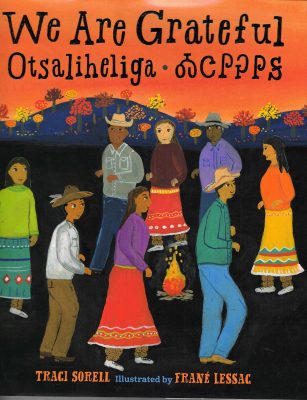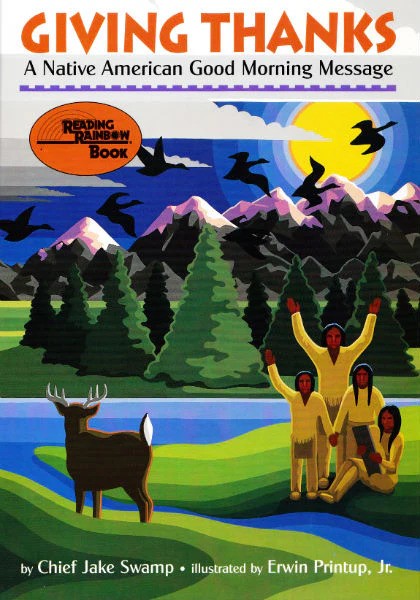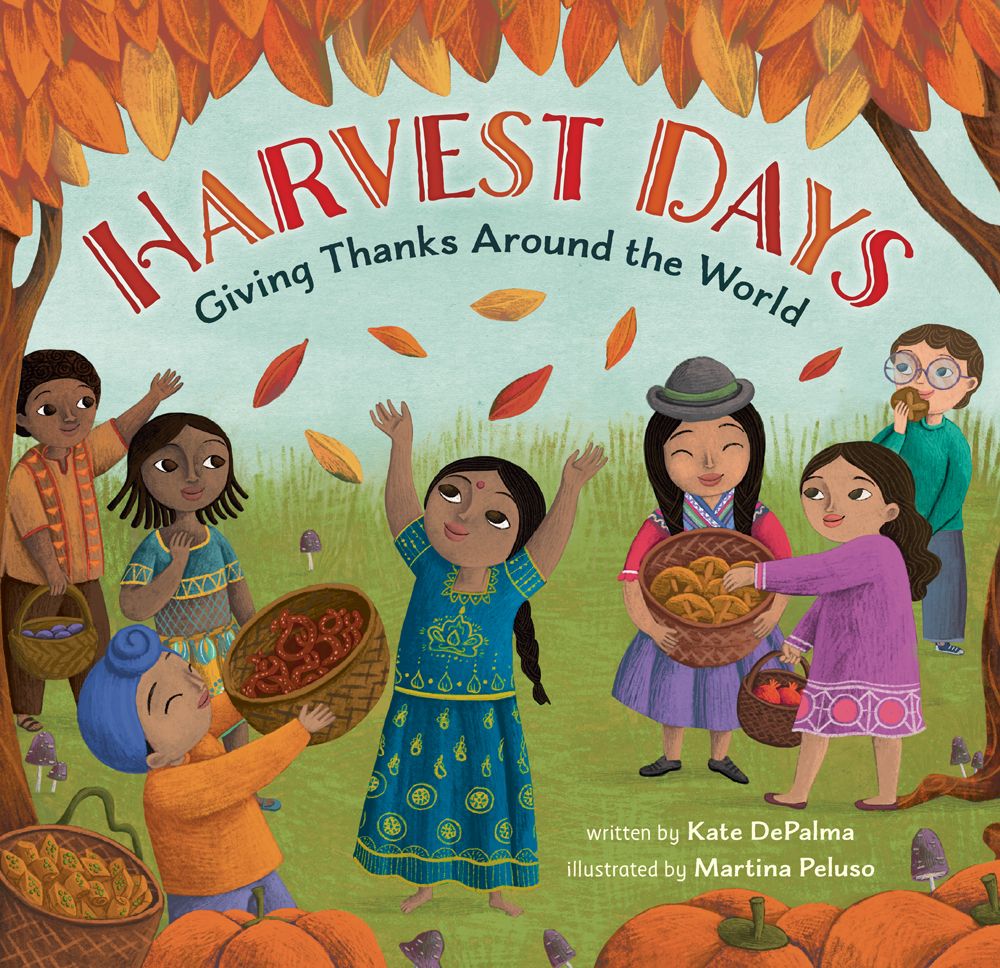By Angeline Hoffman, White Mountain Apache Tribe
 Story is about the unique ways of teaching and learning as reflected through special connections to nature, family, community and ecology. It is understanding and acknowledging the connections and deep knowledge through teaching and learning about how life is.
Story is about the unique ways of teaching and learning as reflected through special connections to nature, family, community and ecology. It is understanding and acknowledging the connections and deep knowledge through teaching and learning about how life is.
Indigenous stories involve members of a community or small groups of relatives gathering together to hear stories told, mostly by an elder, to convey information about the specific Indigenous culture of the community. The stories, especially through the Indigenous language, support the maintenance of Native identity. Embedded in these stories is the important knowledge that we, as Native Americans from special tribal cultures, must acquire to survive and to conduct oneself appropriately. Both the narratives and the languages that convey them are place-based in the sense that they are tied to the land – especially the knowledge of where we came from, where we live, how we survive and our way of life.
 Four books that can summarize these stories and provide educational usage of them are Gratitude Is My Superpower by Alicia Ortego, We Are Grateful: Otsaliheliga by Traci Sorell and Frane Lessac, Giving Thanks: A Native American Good Morning Message by Chief Jake Swamp and Erwin Printup and Harvest Days: Giving Thanks Around the World by Kate DePalma and Martina Peluso.
Four books that can summarize these stories and provide educational usage of them are Gratitude Is My Superpower by Alicia Ortego, We Are Grateful: Otsaliheliga by Traci Sorell and Frane Lessac, Giving Thanks: A Native American Good Morning Message by Chief Jake Swamp and Erwin Printup and Harvest Days: Giving Thanks Around the World by Kate DePalma and Martina Peluso.
Gratitude Is My Superpower is a heart-warming story of how Little Betsy uses a magic stone to see that simple things in life bring happiness. When Little Betsy forgets to use her stone, she realizes that gratitude comes from the heart. This book assists students in numerous ways: first, they will focus on the blessings they receive daily; second, they will begin to appreciate what others do for them; and third, they will feel true happiness when they realize that they have everything they need.
Also included is a gratitude journal to improve happiness and gain a new appreciation for your life and the life or your children.
 We Are Grateful: Otsaliheliga reminds us to frequently and consistently celebrate our blessings and reflect on struggles. This book begins in Fall with the new year and ends in summer, following a Cherokee year and is a beautiful celebration of gratitude and community. Students can follow the seasons with the Cherokee community as they show gratitude for everything and everyone around them. Additionally, We Are Grateful is helpful in addressing the myth of the “First Thanksgiving” with students, as the book emphasizes the formal and informal traditions Indigenous communities have practiced for centuries.
We Are Grateful: Otsaliheliga reminds us to frequently and consistently celebrate our blessings and reflect on struggles. This book begins in Fall with the new year and ends in summer, following a Cherokee year and is a beautiful celebration of gratitude and community. Students can follow the seasons with the Cherokee community as they show gratitude for everything and everyone around them. Additionally, We Are Grateful is helpful in addressing the myth of the “First Thanksgiving” with students, as the book emphasizes the formal and informal traditions Indigenous communities have practiced for centuries.
Giving Thanks: A Native American Good Morning Message is an adaptation of the Thanksgiving Address, a message of gratitude that originated with the Native people of upstate New York and Canada and that is still spoken at ceremonial gatherings held by the Iroquois, or Six Nations. Giving Thanks should be read with students every morning while expressing thanks to the world, connectedness and deep respect of all things. Teaching our children these important words will doubtlessly take us through these rough times and make the world as beautiful and peaceful as it was intended to be.
 Harvest Days: Giving Thanks Around the World shares 12 global cultures with time-honored festivals centering gratitude around harvest – both the food itself and the labor to bring it to the table. In addition to highlighting the festivals, the book provides a pronunciation guide, pullout boxes with additional information, and 9 pages of endnotes. Together the reader can use these as a inspiration for further investigation.
Harvest Days: Giving Thanks Around the World shares 12 global cultures with time-honored festivals centering gratitude around harvest – both the food itself and the labor to bring it to the table. In addition to highlighting the festivals, the book provides a pronunciation guide, pullout boxes with additional information, and 9 pages of endnotes. Together the reader can use these as a inspiration for further investigation.
Each of these stories has been the primary way for connecting each generation to each other. Story is the way that we remember to remember who we are, where we come from and where we go as we enter the twenty-first century.
WOW Currents is a space to talk about forward-thinking trends in global children’s and adolescent literature and how we use that literature with students. “Currents” is a play on words for trends and timeliness and the way we talk about social media. We encourage you to participate by leaving comments and sharing this post with your peers. To view our complete offerings of WOW Currents, please visit its archival stream.
